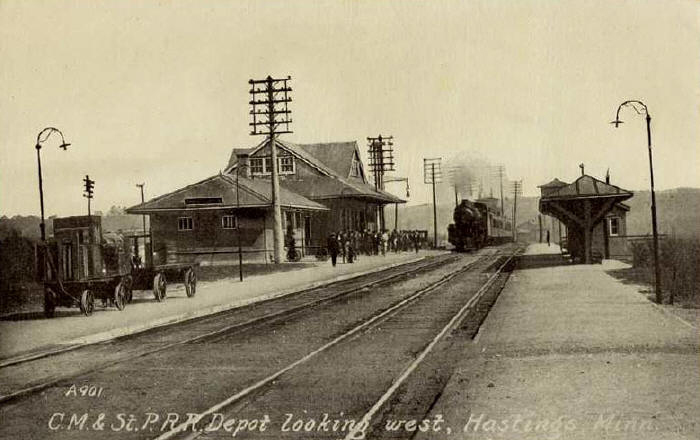Q: What is the Red Rock Corridor?
The Red Rock Corridor is a proposed 20-mile transitway, connecting the Twin Cities’ southeastern suburbs to Saint Paul and Minneapolis. The transitway will originate in Hastings with stops in Cottage Grove, St. Paul Park, Newport, and Saint Paul’s Battle Creek neighborhood before terminating at Union Depot in downtown Saint Paul. Riders will be able to connect to other regional transit service at Union Depot including express bus and light rail service to downtown Minneapolis.
Q: Who is the Red Rock Corridor Commission?
The Red Rock Corridor Commission is comprised of 7 members representing the counties and communities within the corridor.
Q: Why are transportation investments needed in the corridor?
The Red Rock Corridor has regional, statewide, and national significance as a primary transportation route for automobile, truck, and rail travel. Highway 61 is a principal arterial and part of the National Highway and National Scenic Byway systems. As population and employment increase, demand for transportation increases and congestion will only get worse unless a transit solution is pursued.
Q: What transit options have been considered for this corridor?
When the Red Rock Corridor was first identified as a proposed transitway in the 1990s, proponents envisioned the area being served by commuter rail. Commuter rail continued to be the recommended type of transit until 2014, when an Alternative Analysis Update (AAU) found bus rapid transit (BRT) to be best aligned with project goals and objectives.
In 2016, an Implementation Plan. was completed. This plan outlined a phased approach with both near- and long-term strategies and recommendations. Recommendations for the near term (Phase I), between 2016 and 2020, focused on increasing local and express bus service and building transit ridership. Recommendations for the long term (Phase 2), between 2020 and 2040, focused on introducing BRT to the corridor. Following the recommendations of the Implementation Plan, the cities of Cottage Grove and St. Paul Park worked with Washington County to develop small areas plans for the proposed station areas in each city. The small area plans looked at land use, economic development, and redevelopment opportunities in the station areas so that residents and employers could have more transportation choices, and transit could serve people better
Since the Implementation Plan was completed, the COVID-19 pandemic and other developments have changed what residents and employers need from their transportation system. In 2023, the Red Rock Corridor Commission is embarking on a Vision Refresh to ensure it is pursuing a transit service that best meets people’s needs, supports economic growth and development, and improves residents’ quality of life.
Q: What are the next steps?
The Red Rock Corridor Commission will continue to focus on expanding bus service, growing transit ridership, and promoting economic development throughout the corridor. Additionally, in 2023, a Vision Refresh aims to explore less traditional transit opportunities that may suit the unique circumstances of this corridor.
Q: Will the Red Rock Corridor compete with the METRO Green Line (Central Corridor)?
No, analysis completed by the METRO Green Line showed that there is minimal overlap in the corridors’ markets. Riders on the METRO Green Line are more likely to travel to destinations primarily along University Avenue, including stops in both downtown areas and the University of Minnesota, while Red Rock riders are commuters primarily destined for either downtown Saint Paul or downtown Minneapolis. Riders for each corridor will take the system that most effectively meets their needs.
Q: Will the Red Rock Corridor be extended further south?
No, Hastings is the furthermost terminus for bus rapid transit service along the Red Rock Corridor.
Q: Is there existing transit service in the corridor?
Yes, Metro Transit currently operates express bus service on Route 363 between Cottage Grove and the downtowns of Saint Paul and Minneapolis. Park & Ride lots available at Lower Afton Road in Saint Paul and in Cottage Grove are currently served by transit in the corridor.
For more information on current Metro Transit route schedules, visit https://www.metrotransit.org/schedules-maps.
Q: How will the Red Rock Corridor connect with other regional transit improvements?
The Red Rock Corridor will seamlessly connect to other transit lines and services at the stations along the corridor, and once fully built could share stations with the METRO Gold Line in the east side of Saint Paul. At the Union Depot in downtown Saint Paul, Red Rock will connect with Metro Transit buses, taxis, intercity buses (Greyhound and Jefferson Lines), METRO Green Line (light rail), high-speed passenger rail from Chicago, Amtrak’s Empire Builder, and future connections to both the Gateway and Rush Line Corridors. At the other stations, Red Rock will provide convenient connections with local bus service.





